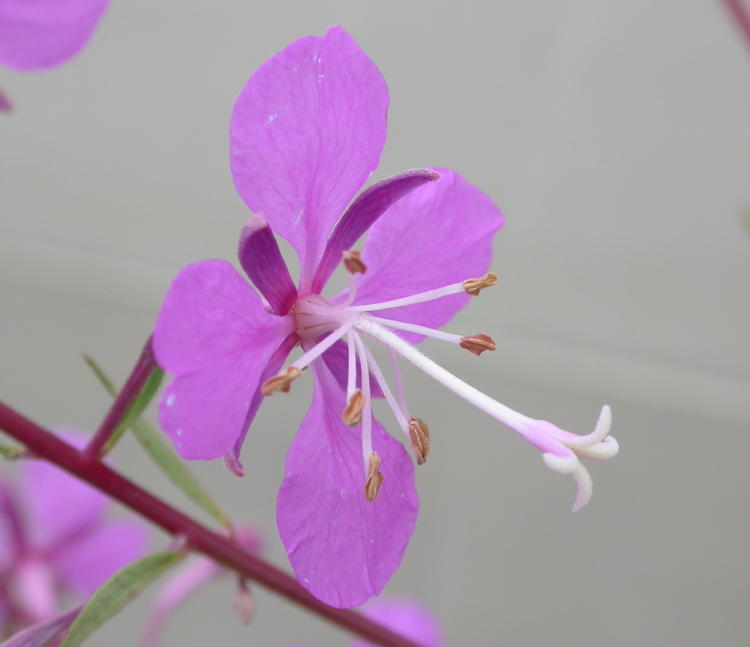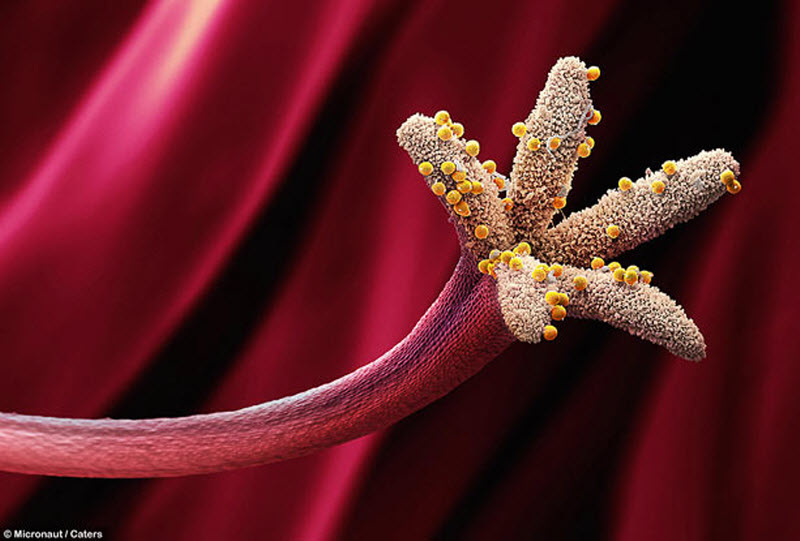Plants for Food and Fibre
Seed Plants
- Many plants reproduces by means of seeds not spores
Flowers - contains both male and female parts for reproduction
- Stems - pathway for water and nutrients to travel as well supporting the leaves and reproductive structures.
- Leaves - produces food, takes/releases O2 and CO2, H2O is allowed to leave
- Roots - absorbs water & dissolves nutrients, as well anchors the plant in the ground
Fibre:
- plant material that cannot be digested but that helps you to digest other food
- a thin thread of natural material that can be used to make cloth, paper, etc.
Lets watch a timelapse of seed growth
How do plants make food?
Photosynthesis :
H2O + CO2 --> C6H12O6 + O2
- Leaves do most of the work, a structure known as CHLOROPLASTS (contains chlorophyll which captures the sun’s energy and uses it to join the CARBON DIOXIDE and WATER to make SUGAR)
How do plants use food?
Cellular Respiration :
C6H12O6 + O2 --> H2O + CO2
- Plants use energy to turn CO2 and water into sugar (plant food), therefore when plants use this sugar they get energy and produce CO2 and Water
Solution:
Is a mixture composed of two or more components (one of the components is usually water)
Concentration:
Is the number of particles of one substance in a certain volume of another substance
- Water with dissolved lemonade crystals is said to be a solution with a high concentration
- Salt water from the sea is also a solution with a high concentration, the more salt there is the higher the concentration
- Tap water is technically a solution with low concentration
Diffusion:
- Is the movement of particles
- Particles move from an area where the solution is highly concentrated to an area where the solution has a low concentration, this continues until there is an equal concentration of particles everywhere
- Does not need a membrane to pass through
Osmosis:
- Is the movement of water:
- Water moves from an area where the solution has a low concentration to an area where the solution is highly concentrated, this continues until there is an equal concentration of particles everywhere
- Must be across a permeable membrane
Gas exchange
Gas enters and leaves plant through stomata. Stomata have the ability to close when the plant is dry and wants to limit water loss from transpiration.
- In photosynthesis plants
- use CARBON DIOXIDE
- make OXYGEN
- In cellular respiration plants
- use OXYGEN
- make CARBON DIOXIDE
3 Main Processes which draws water up plants!
THIS SHOWS CAPILLARY ACTION, NOTICE THE THINNER THE TUBE THE HIGHER UP THE TUBE THE WATER TRAVELS?
1. Transpiration:
Evaporation of water from the surface of a plant (leaves), as more water particles move up to take the place of the evaporated particles
2. Capillary Action:
Water travels via tiny tubes, the attraction of water particles to themselves and the tubes causes the movement up the plant stem
3. Osmosis:
Water from the soil enters the roots, only when the concentration of water in the soil is greater than the concentration of water in the roots, the water particles will transfer over
Seed PARTS
1.Embryo
is the state of an organism before hatching or birth
2.Stored Food
Embryo uses the stored food until it begins to photosynthesize and produce its own food.
3.Seed Coat
Protects seed until conditions are favourable for germination (ie, protects against animal's digestive tract)
Life cycle of a plant
Germination:
Is the development of a seed into a new plant.
Reproduction of Seed Plants
Pollination:
Occurs when pollen is transferred from the anther to the stigma and fertilizes the ovaries of the flower
Male part:
Pollen Grains (contains pollen) - Small sticky cells
Female part:
Ovary (center of the blossom) - Contains an OVULE (egg)
-Pollination occurs when the Pollen Grain lands on the Stigma of the flower (above the ovary)
- A pollen tube is formed growing down the Stigma into the Ovule
- Cells then transfer and the Ovule grows into a seed
Pollination & Seed Dispersal
- Air and Wind
- Water
- Pollinators (organisms that carry pollen from one flower to another)
- Pollinators come in search of nectar (food) and by moving to feed they cover themselves in pollen transporting it to the next landing site where it sticks to the stigma of a flower.
Reproduction WITHOUT Seeds
Vegetative Reproduction:
- Reproductive process that is asexual and so does not involve separate male and female parts
- Asexually reproduced plants are genetically identical!
Production of new plants from sources other than seed:
- Cuttings - small pieces of a plant usually the stem create new roots and is planted
- Root runners - off shoots that sprout into new plants
- Grafting - attaching one part of the plant to another having the two sections grow together
Basic Needs for Plant Growth
Plants need the right conditions to grow successfully!!
Light:
- The need of light for photosynthesis
- Not all plants need the same amount of light
Water:
- Plants need water to survive (used in nutrient transport & photosynthesis)
- However TOO MUCH water will cause plants cells to burst and die!
Nutrients:
Substance that provides the materials needed for the plant to grow successfully (think building blocks)
Nutrients needed to grow properly are
- Nitrogen
- Phosphorous
- Potassium
- Calcium
- Magnesium
Activity - small groups (2-3 students)
- Create a brief slideshow (3-6 slides) of 3 different plants that we use for food and fibre
- Showcase each plant (use an image), where it can be found in the world, and weather it is 'wild' or farmed
- Inform the audience whether the plant is used for food or fibre:
- Rice used in many dishes around the world (food)
- Cinnamon tree bark is used as a spice (food)
- Maple is used as a fibre to build furniture (fibre)
- Spruce trees used for paper (fibre)
- Cotton used for clothing garmets (fibre)





















